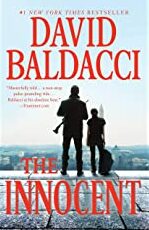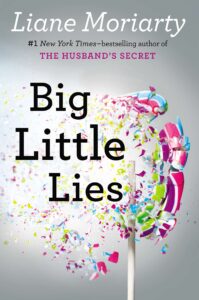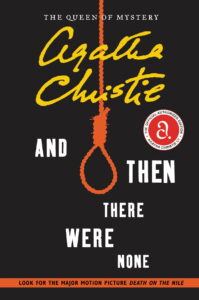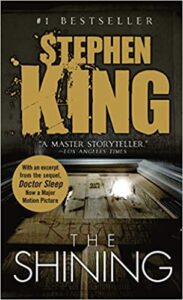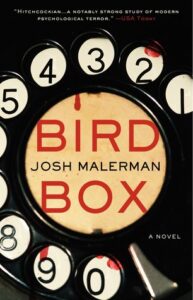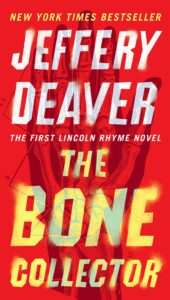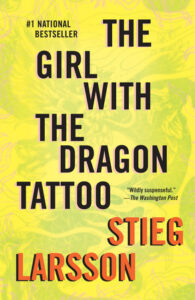You’ve come to the right place if you’re looking to find story ideas for your thriller writing. This blog post will discuss thriller writing ideas from bestselling authors. These are authors who know how to write a page-turner!
We’ll also provide some tips on where to find inspiration for your next book. So, whether you’re just starting as a thriller writer or looking for new ideas, read on!
What separates bestselling authors from the competition?
There are a few key things that separate successful authors from the competition. First and foremost, successful authors are experts in their field. They have spent years mastering their craft and know what they need to do to write a best-selling book.
Second, successful authors are great marketers. They know how to reach their target audience and generate buzz for their books. And finally, successful authors are relentless in their pursuit of success. They never give up and continue working hard until they achieve their goals.
We asked: Is it essential to come up with a unique premise for your thriller?
“I think it’s important to have a unique premise or angle for your thriller,” says bestselling author Jeffery Deaver. “That will set you apart from the competition once your book is published.”
Deaver, who has written more than 30 thrillers, including The Bone Collector, says he often comes up with ideas for his books by looking at current events and news stories. “I find inspiration everywhere,” he says. “The key is to be open to new ideas and to have a flexible mind.”
Bestselling author, David Baldacci, agrees that it’s essential to have a fresh take on the genre. “I’m always looking for new ideas and ways to tell a story,” he said. “To me, that’s what keeps readers coming back.”
Baldacci also noted that it’s essential to keep the reader guessing. “The best thrillers are the ones that keep you guessing until the very end,” he said. “You never know what will happen from one page to the next.”
The Innocent by David Baldacci
Great thriller writing ideas from bestselling authors
While there’s no surefire recipe for writing a bestseller, some thriller writers have come up with some genuinely suspenseful ideas that have kept readers on the edge of their seats. Here are a few of them:
-A serial killer seems to be taking inspiration from historical murders.
-A woman starts to believe she’s being followed, only to realize her stalker is a figment of her imagination.
-An attorney realizes his client is guilty of a horrific crime but cannot find evidence to prove it.
-A man begins receiving threatening letters, seemingly from himself.
So if you’re looking for novel ideas for your short stories or a thriller novel, start by thinking about what scares you or what would keep you awake at night.
Big Little Lies by Liane Moriarty
Where to find book inspiration for your next thriller
Here are a few ideas that will keep your audience on the edge of their seats:
-A group of friends/strangers find themselves in a dangerous situation (e.g., being trapped in a room with a killer or being stranded in a remote location with no help in sight).
-A mystery WHO did something (e.g., who killed so-and-so, or who is the mastermind behind the heist?).
-Characters with secret agendas (e.g., one character is plotting to kill another, or two people are secretly working together to destroy someone else).
-Double crosses and betrayal (e.g., one character seems to be helping another but is leading them into a trap).
-Reading up on current events and world news, a thriller writer could craft a story around a recent political scandal or a new piece of legislation making waves.
-If you’re into science fiction, why not think about futuristic technology that’s making headlines?
-Another source of inspiration for thrillers can be real-life crimes. Of course, you’ll want to avoid ripped-from-the-headlines stories that might be too similar to what’s already out there. But reading about solved and unsolved mysteries can give you some ideas for plots, characters, and settings.
Other places to get inspiration from are fast-paced and suspenseful thrillers with lots of action and plot twists. Thrillers can also be creepy or scary, so you might want to read books that have a horror element.
All books shown in this blog are fast-paced, suspenseful thrillers with lots of action and plot twists.
Have a look at these real-life crime cases:
-The “Black Dahlia” murder case is one of the most famous unsolved murders. The victim, Elizabeth Short, was a young woman brutally murdered in Los Angeles in 1947.
-The “Zodiac Killer” case is another well-known unsolved murder case. The killer was active in the San Francisco area in the 1960s and 1970s and is believed to have killed at least five people.
-The “Golden State Killer” case is a recent one that captured national attention. The Golden State Killer is believed to have committed at least 12 murders, 50 rapes, and 120 burglaries in California in the 1970s and 1980s.
And Then There Were None by Agatha Christie
Do bestselling authors use specific techniques to come up with new story ideas?
There’s no one accurate way to develop new thriller story ideas, as each bestselling author has their unique process. However, there are some standard techniques that many authors use to elicit those bright “eureka!” moments.
One popular method is the “plot sponge,” which involves soaking up as much related material as possible – think old movies, detective novels, conspiracy theories, etc. By constantly filling your mind with thriller-related content, you’re more likely to come across an intriguing plotline or concept that you can riff off of.
Another helpful strategy is called “mashups,” which takes two existing ideas or concepts and combines them into something new and fresh. For example, what would happen if a vampire carried out a presidential assassination?
Many thriller authors find inspiration in real-world events, so staying up-to-date on what’s going on is essential.
This doesn’t necessarily mean reading the newspaper from front to back every day (although it could), but simply being aware of current events and keeping an eye out for potential plot ideas.
Taking inspiration from other genres:
Thrillers are often compared to other genres like suspense or mystery, but that doesn’t mean you should limit yourself to only reading thrillers.
Instead, if you find a book in another genre that captivates you, try to analyze what it is about the book that makes it so fascinating and see if you can apply those same elements to your writing.
The Shining by Stephen King
How do you know when you’ve got a good thriller idea?
You’ve probably heard the saying, “write what you know.” While this isn’t bad advice, it doesn’t necessarily mean that your only options for writing are personal memoirs or stories based on your own life. But how do you know what’s worth writing about?
Many writers find that some of their best ideas come from exploring things they don’t know much about. If you have a more open mind about where your ideas come from, you may find a whole new batch of possibilities for writing thrillers.
There’s no definitive answer, but if an idea for a thriller makes your heart race and your palms sweat, then it’s a good one. But, of course, the stakes need to be high to make a thriller truly captivating, and the suspense needs to be electric.
So ask yourself this question: what would the main character do if they knew they only had one hour left to live? If you can come up with a compelling answer, you’re on the right track.
So, if you’re awake at 2:00 am because you can’t stop thinking about it and won’t let go. It consumes your thoughts and won’t let you sleep. You find yourself brainstorming different ways to twist the plot or develop the characters. If you’re excited about the idea and can’t wait to write it, then chances are, it’s a good thriller idea.
You know you have a good thriller idea when you can answer the question “What if?” with a terrifying proposition. For example, what if a virus caused people to become extremely violent? What if there was a way to control people’s thoughts? What if someone could read your mind?
These are just a few possibilities that could make for an exciting and gripping thriller story. The key is to develop believable ideas (or at least possible) that raise the stakes for your characters.
So ask yourself, “What if?” and see where it takes you. You may be surprised at how frightening the answers can be!
The Bird Box by Josh Malerman
Are there “rules” or guidelines to follow when brainstorming for story ideas?
Yes! There are some brainstorming “rules” to follow to increase the chances of coming up with creative ideas. Here are a few:
Quantity over quality
Allow yourself to generate as many ideas as possible. The more ideas you come up with, the better your chances of finding a great solution.
Be open to all possibilities
One of the most important things to remember is not to judge your ideas prematurely. Ideas are rarely perfect when first conceived, so it’s crucial to allow yourself the freedom to explore all possibilities before ruling any of them out. Just let them flow freely without any criticism or judgment.
Jot down your ideas as they come to you
Write down everything that comes to mind, no matter how silly or crazy it may seem. The more ideas you generate, the greater the chance of having a good one.
Writing them down will help keep track of them and make them easier to develop later. You never know when one of those “silly” ideas might turn out to be brilliant.
Don’t try to be too logical or rational
The best ideas usually come when you least expect them, so don’t try to force them. The more you try to be logical or sensible, the more likely you will miss something important. Just let your mind wander and see where it takes you.
The Bone Collector by Jeffery Deaver
The Girl With the Dragon Tattoo by Stieg Larsson
In Conclusion
If you want to write a bestselling thriller, it’s essential to develop a unique story idea and then stick to the basics that make thrillers so successful. Study what makes your favorite thrillers work and try some of the techniques employed by bestselling authors.
Remember, there are no hard-and-fast rules when brainstorming for story ideas – keep exploring until you find a picture that grabs you. Once you have a great idea, don’t let it go! Instead, write down all of your thoughts and start planning out your novel.
If you’re working on your first novel and are looking for more help with your writing, please check out my other articles at https://ullahakanson.com/blog/
Good luck!
Ulla


